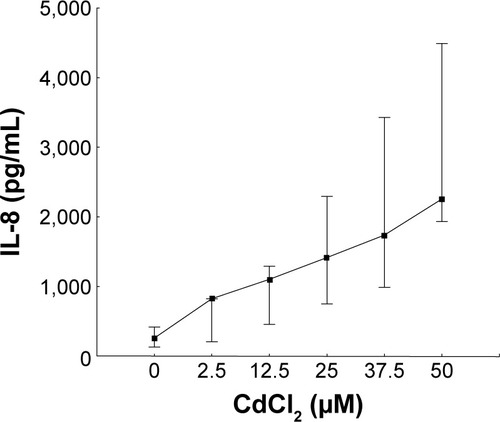Figures & data
Table 1 Characteristics of the groups of the study cohort
Figure 1 Concentrations (µg/L) of cadmium (Cd) in cell-free BAL fluid samples from smokers with (n=12) or without (n=17) COPD compared with healthy nonsmokers (n=19).
Abbreviation: BAL, bronchoalveolar lavage.
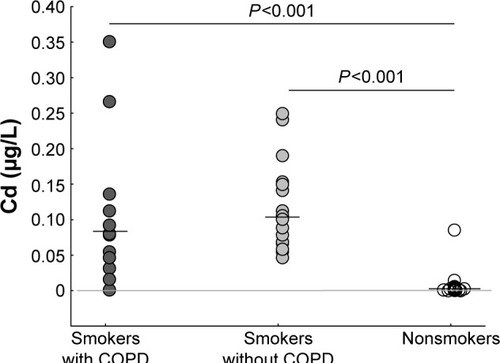
Figure 2 Relationship between cadmium (Cd) in the airways and inflammatory cells in blood.
Abbreviation: BAL, bronchoalveolar lavage.
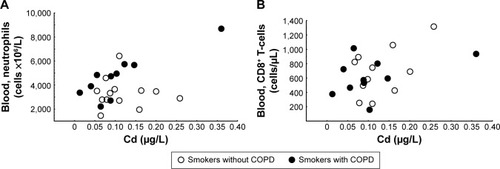
Figure 3 Relationship between cadmium (Cd) and messenger RNA for TNF-α in the airways.
Notes: Concentrations of Cd in cell-free BAL fluid and macrophage TNF-α at mRNA levels in BAL cells (all smokers: R=0.60, P=0.03, n=10; smokers with COPD only: R=0.97, P=0.002, n=6). All correlations analyzed with Spearman rank correlation test.
Abbreviations: BAL, bronchoalveolar lavage; MQ, macrophage; TNF-α, tumor necrosis factor alpha.
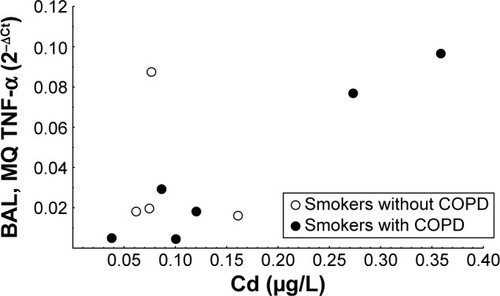
Figure 4 Relationship between cadmium (Cd) and molecular markers of inflammation in the airways.
Abbreviations: BAL, bronchoalveolar lavage; IL, interleukin.
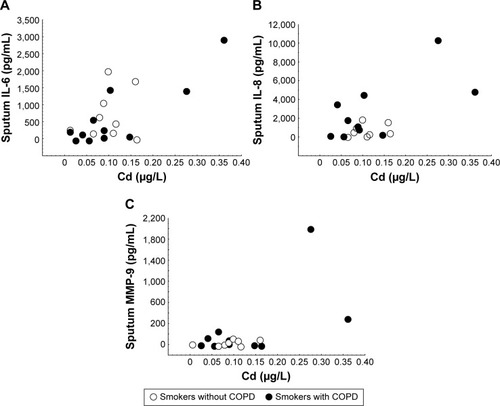
Figure 5 Effect of cadmium (Cd) on the archetype chemokine IL-8 in macrophage-like cells in vitro.
Abbreviations: CdCl2, cadmium chloride; IL, interleukin.
